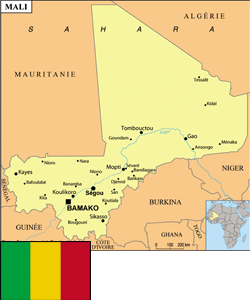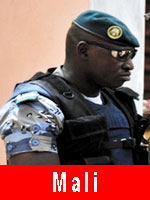
National Gendarmerie of Mali
|
1960 Ministry of attachment: Ministère de la Défense et des Anciens combattants Workforce: 4 532 General manager: Colonel-major Satigui dit Moro Sidibe Address: Avenue Roume - Rue 562 - BP 246 Tél.: (+223) 20230243 Fax: (+223) 20222664 Email: satmoro@yahoo.com 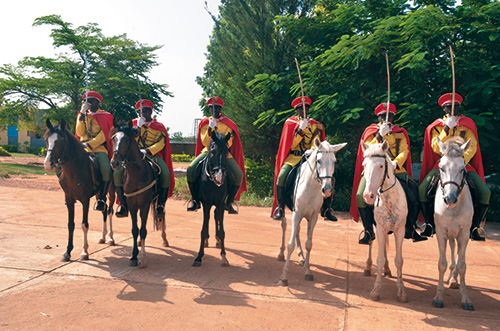
|
History
The National Gendarmerie of Mali arises from the French colonial gendarmerie implanted in this colony called the French Sudan. On April 4th, 1959, Senegal and Sudan join together in order to create the Federation of Mali, which reaches the independence on June 20th, 1960. The Sudanese gendarmerie is created by the federal decree of August 19th, 1960. But the explosion of the federation of Mali, connected to the Senegal departure, leads the transformation of the Sudanese gendarmerie in National Gendarmerie of Mali. From 1960 till 1968, the non-commissioned officers are trained in the Instruction Centre located at Camp n°1 in Bamako, opened in 1959. The Kati Combined Arms Military Academy, opened in 1962, trains the officers. During the same period, a gendarmerie territorial brigade is opened at the level of each circle administrative centres, and a gendarmerie company at each region administrative centres level. From 1968, the school protest movements bring the creation of organic mobile units in regions, among which the group of intervention of gendarmerie (GIG), the nomadic groups of intervention of gendarmerie (NGIG) and the squadron 2/1 in Bamako in 1973. The gendarmerie starts a large restructuring in 1999-2000. The staff is set up as direction, with two commands (mobile and territorial) and corps of gendarmes. The feminine recruitment begins in 2007. From January 2012, the Malian gendarmerie is confronted with its three North regions occupation by jihadist movements questioning the territorial unity of Mali. January 13th, 2013 marks the beginning of the jihadists’ backward movement who threatened Bamako thanks to the French army support (operation Serval) occurring with the agreement of the UNO.

Organization
The Malian National Gendarmerie is under the Ministry of Defence and the War veterans supervision.
Central Organization
A General Direction including:
• a cabinet;
• four departments (staff - operations and employment - administrative and financial - file and transmissions);
• four connected services (school - ministerial reserves units grouping - inspection - judicial investigation services).
Territorial organization
• 12 corps of gendarmes.
• 12 territorial squads of Gendarmes.
• 24 territorial companies.
• 114 territorial brigades.
• 2 mixed brigades.
• 170 security stations.
.jpg)
Specialized Training
• A command of the gendarmerie anti-riot police which articulates in 12 groupings, 27 squadrons and in platoons.
• Motorcycles units.
• A cavalry unit.
• Dog units.
• A National Gendarmerie Intervention Platoon (NGIP).
• Criminal investigations units (intelligence services, brigades of research).
• River brigades.
• Air Transport Units (Air transport company and air transport brigades).
Missions
• Administrative Police missions.
• Criminal Investigation missions.
• Military police of defence missions (National territory operational defence, provostship missions).
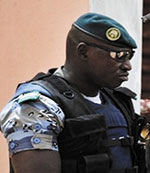 Staff
Staff
The Malian gendarmerie staff workforce is 4 532 among which 185 feminine personnels among whom are 5 officers and 3 aspirants. The overall number is distributed between the officers and the non-commissioned officers’ bodies. The non-commissioned officers are recruited by direct competition in conformance with the general service or the concerned specialities. The cadet gendarmes have a 18 months training course. The officers are recruited according to 4 streams: the direct recruitment, the recruitment through professional competition, the recruitment by appointment on merit in ranks, and other ways (aspirants pursuing studies of the Second-Year university diploma for the specialization), of active cadet officers pursuing a training course in an officers’ basic school.
Training institutions
Malian Gendarmerie National school in Bamako.
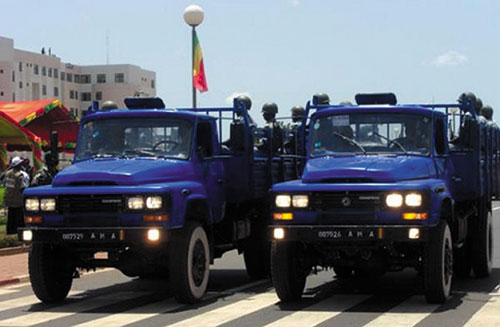
Main equipment
• Armament: weapons of war (Machine Pistol, Automatic Pistol, Machine gun).
• Vehicles: driven Land Cruiser, Toyota pick-up, Gendarmerie Armoured Wheeled Vehicle (French VBRG).
Cooperation
• French Cooperation (Training, "Parka" equipment).
• Spanish Cooperation (Training, equipment, "West Sahel project").
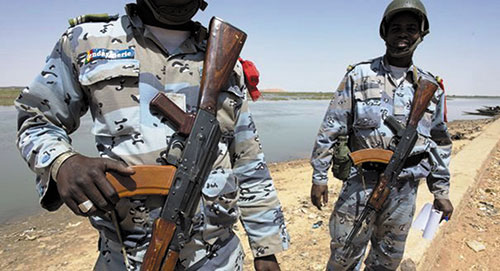
© The iconography was provided by the concerned gendarmeries

